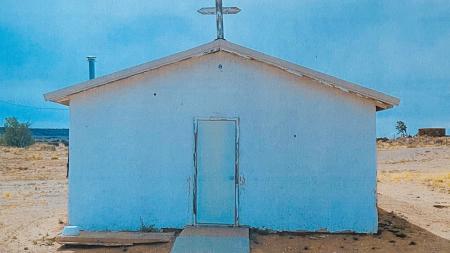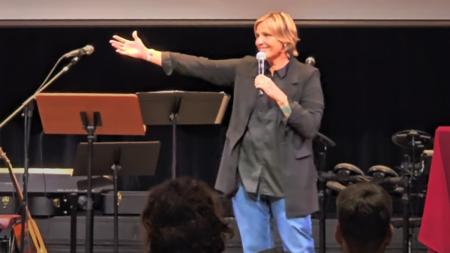The Good Samaritan and COVID-19

Lessons from the parable of the good Samaritan weave through a small manual that the Timothy Leadership Training Institute (TLTI) developed in response to the COVID-19 pandemic and has sent to people in dozens of countries around the world.
Called “Loving Your Neighbor in the COVID-19 Epidemic,” the manual combines general medical advice, such as to avoid gathering in groups and to wash your hands frequently, with biblical themes from the story of the good Samaritan in Luke 10:25-37 and from other Scripture passages.
The goal is for families to read the four short sections of the manual and discuss them as a way to help in coping with the pandemic and in reaching out to others in the midst of it.
“We particularly hope people living under the same roof can use this for personal study and reflection. We also encourage people to share by a text or phone call what they are learning with others,” said Albert Strydhorst, coordinator of TLTI, which is a part of Raise Up Global Ministries of the Christian Reformed Church in North America.
The idea of the manual, said Strydhorst, is to show love in practical ways for our neighbors. The introduction to the manual helps to explain by saying, “The COVID-19 virus is so dangerous because most people who are infected don’t even know it. You may not feel sick, but you can still be infected. And when you are infected, even without even knowing it, you can make others sick!
“Therefore, one of the ways you can love and protect your neighbor [at this time] is by keeping physical space from each other. You should not meet in groups, except with those living together in the same house.”
Published in English and Spanish, the manual is already being translated into Amharic (Ethiopia), Nepali (India and Nepal), Bassa (Liberia), Mizo (Myanmar), Bengali (Bangladesh), Korean, and Dutch. In addition, the study is also posted on Discipling Marketplace Leaders, a website that serves African pastors, churches, and denominations.
“We have been encouraged by how quickly this has been taken up and translated into other languages and how groups are printing their own copies and getting them out to others,” said Strydhorst.
A woman in Bangladesh said, "The manual is very good and encouraging during this pandemic. . . . I can pass it to churches nearby and [in more rural areas]. Church leaders can distribute it so that people can study in family groups.”
A reader in Korea said, “Korean missionaries . . . [told me this manual came] in a perfectly timely manner. Two of them already translated it and shared it with others so that each family can study it in their homes.”
In Uganda, a user said that one young woman “immediately put into practice what she had learned by gathering water each morning for hand washing.”
Sent to 42 countries in which TLTI has already been working through its church leadership training and materials, the manual has gone out to several places where people are living in vulnerable conditions. Without adequate health care, food, or employment, they can be even more susceptible to diseases such as COVID-19.
At the same time, the manual is designed to offer people — especially in these settings — hope and to provide suggestions on how they might be able to help one another in the midst of personal and communal isolation caused by the pandemic.
The manual suggests that readers use it to find practical ways to help their neighbors through this time in which people have been confined.
“We have learned of those who are sewing masks or setting up hand-washing stations,” said Strydhorst. “TLT has always been oriented toward people coming up with action plans and not just reading the Bible texts.”
In the process of getting the manual out, they have learned, to their deep concern, that many of the people to whom they have sent the material have a hard time obtaining enough food to eat.
“Many people who have been placed in a lockdown can’t get out to work. When that happens, there is a real danger of hunger for the family.”
There are also elderly people and many who are sick, who are in need of food and cannot venture out to get it.
At the same time, said Strydhorst, they have learned of how, in one of the countries,a faith-based group is handing out bags of food along with the manual.
And underscoring the message of the manual is the parable of the good Samaritan and questions that lead readers to deeply examine it.
The manual asks such questions as, “Who in this story did not show concern for human life? How did they show this lack of concern? Who in this story showed that human life has great value? How was this shown?”
In addition, as part of developing an action plan, the manual poses, “What were the specific needs of the man who was attacked? How did the Samaritan meet the man’s specific needs?”
Also, getting to the heart of Jesus’ message: “Have you ever met someone like the good Samaritan when you were in need? How did you feel? Share your memory, or write it down.”
Strydhorst said the irony of the coronavirus disease is that it causes us to isolate, making it difficult to reach out to one another. But we can offer prayers for loved ones, make phone calls, and continue to consider how best to gather and help one another when we can do those things again.
“This epidemic is not restricted to a few countries. It is a global thing,” said Strydhorst. “We all have the opportunity to respond to our neighbors.”


